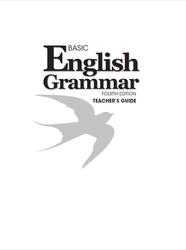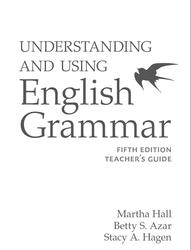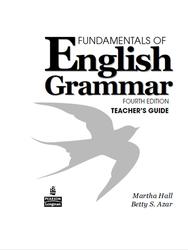Fundamentals of English Grammar, Teacher’s Guide, Azar B.S., Matthies B.F., Hartle S., 2003.
The principal aims of Fundamentals of English Grammar are to present clear, cogent information about English grammar and usage, to provide extensive and varied practice that encourages growth in all areas of language use, and to be interesting, useful, and fun for student and teacher alike. The approach is eclectic, seeking to balance form-focused language-learning activities with abundant opportunities for engaged and purposeful communicative interaction.

Simple present verbs: using final -S/-ES.
The principal purpose of this exercise is to get students up, moving, and talking to each other while they are focusing on the correct use of the target structures.
The vocabulary in this practice will be difficult for many of the students; vocabulary development is one of the intentions. You could ask for and answer questions about the meanings of words prior to the students doing the practice, or you could leave them on their own as they explain to each other the meanings of the words with the aid of their dictionaries. Both approaches to vocabulary discussion have their own advantages. A teacher can give quick and accurate information; in peer teaching, the students have the chance to practice various communication skills.
An alternative way of handling this exercise is to write out the items yourself on slips of paper and simply pass them out. This approach shortens the time needed to explain the directions.
If you have more than 24 students in your class, you will need to add more items of your own. If you have fewer than 24 students, some students will have two slips of paper that they will need to find matches to.
Contents.
PREFACE.
INTRODUCTION.
General Aims of Fundamentals of English Grammar.
Classroom Techniques.
Suggestions for Presenting the Grammar Charts.
Degrees of Teacher and Student Involvement.
Interactive Group and Pair Work.
Monitoring Errors in Interactive Work.
Techniques for Exercise Types.
Fill-in-the-Blanks and Controlled Completion Exercises.
Open Completion Exercises.
Transformation and Combination Exercises.
Oral Exercises.
Writing Exercises.
Error-Analysis Exercises.
Preview Exercises.
Discussion-of-Meaning Exercises.
Games and Activities.
Pronunciation Exercises.
Seatwork.
Homework.
Using the Workbook.
Supplementary Resource Texts.
Notes on American vs. British English.
Differences in Grammar.
Differences in Spelling.
Differences in Vocabulary.
Key to Pronunciation Symbols.
The Phonetic Alphabet (Symbols for American English).
Consonants.
Vowels.
NOTES AND ANSWERS.
Chapter 1 PRESENT TIME.
1-1 The simple present and the present progressive.
1-2 Forms of the simple present and the present progressive.
1-3 Frequency adverbs.
1-4 Final -s.
1-5 Spelling of final -s/-es.
1-6 Non-action verbs.
1-7 Present verbs: short answers to yes/no questions.
Chapter 2 PAST TIME.
2-1 Expressing past time: the simple past.
2-2 Forms of the simple past: regular verbs.
2-3 Forms of the simple past: be.
2-4 Regular verbs: pronunciation of -ed endings.
2-5 Spelling of -ing and -ed forms.
2-6 The principal parts of a verb.
2-7 Irregular verbs: a reference list.
2-8 The simple past and the past progressive.
2-9 Forms of the past progressive.
2-10 Expressing past time: using time clauses.
2-11 Expressing past habit: used to.
Chapter 3 FUTURE TIME.
3-1 Expressing future time: be going to and will.
3-2 Forms with be going to.
3-3 Forms with will.
3-4 Sureness about the future.
3-5 Be going to vs. will.
3-6 Expressing the future in time clauses and if-clauses.
3-7 Using the present progressive to express future time.
3-8 Using the simple present to express future time.
3-9 Immediate future: using be about to.
3-10 Parallel verbs.
Chapter 4 THE PRESENT PERFECT AND THE PAST PERFECT.
4-1 Past participle.
4-2 Forms of the present perfect.
4-3 Meanings of the present perfect.
4-4 Simple past vs. present perfect.
4-5 Using since and for.
4-6 Present perfect progressive.
4-7 Present perfect progressive vs. present perfect.
4-8 Using already, yet, still, and anymore.
4-9 Past perfect.
Chapter 5 ASKING QUESTIONS.
5-1 Yes/no questions and short answers.
5-2 Yes/no questions and information questions.
5-3 Where, why,when, and what time.
5-4 Questions with who,who(m), and what.
5-5 Spoken and written contractions with question words.
5-6 Using what + a form of do.
5-7 Using what kind of.
5-8 Using which.
5-9 Using whose.
5-10 Using how.
5-11 Using how often.
5-12 Using how far.
5-13 Length of time: it + take and how long.
5-14 More questions with how.
5-15 Using how about and what about.
5-16 Tag questions.
Chapter 6 NOUNS AND PRONOUNS.
6-1 Pronunciation of final -s/-es.
6-2 Plural forms of nouns.
6-3 Subjects, verbs, and objects.
6-4 Objects of prepositions.
6-5 Prepositions of time.
6-6 Word order: place and time.
6-7 Subject–verb agreement.
6-8 Using adjectives to describe nouns.
6-9 Using nouns as adjectives.
6-10 Personal pronouns: subjects and objects.
6-11 Possessive nouns.
6-12 Possessive pronouns and adjectives.
6-13 Reflexive pronouns.
6-14 Singular forms of other: another vs. the other.
6-15 Plural forms of other: other(s) vs. the other(s).
6-16 Summary of forms of other.
Chapter 7 MODAL AUXILIARIES.
7-1 The form of modal auxiliaries.
7-2 Expressing ability: can and could.
7-3 Expressing possibility: may and might Expressing permission: may and can.
7-4 Using could to express possibility.
7-5 Polite questions: may I, could I, can I.
7-6 Polite questions: would you, could you, will you, can you.
7-7 Expressing advice: should and ought to.
7-8 Expressing advice: had better.
7-9 Expressing necessity: have to, have got to, must.
7-10 Expressing lack of necessity: do not have to Expressing prohibition: must not.
7-11 Making logical conclusions: must.
7-12 Giving instructions: imperative sentences.
7-13 Making suggestions: let’s and why don’t.
7-14 Stating preferences: prefer, like. better, would rather.
Chapter 8 CONNECTING IDEAS.
8-1 Connecting ideas with and.
8-2 Connecting ideas with but and or.
8-3 Connecting ideas with so.
8-4 Using auxiliary verbs after but and and.
8-5 Using and + too, so, either, neither.
8-6 Connecting ideas with because.
8-7 Connecting ideas with even though/although.
Chapter 9 COMPARISONS.
9-1 Making comparisons with as. as.
9-2 Comparative and superlative.
9-3 Comparative and superlative forms of adjectives and adverbs.
9-4 Completing a comparative.
9-5 Modifying comparatives.
9-6 Comparisons with less. than and not as. as.
9-7 Unclear comparisons.
9-8 Using more with nouns.
9-9 Repeating a comparative.
9-10 Using double comparatives.
9-11 Using superlatives.
9-12 Using the same, similar, different, like, alike.
Chapter 10 THE PASSIVE.
10-1 Active sentences and passive sentences.
10-2 Form of the passive.
10-3 Transitive and intransitive verbs.
10-4 Using the by-phrase.
10-5 The passive forms of the present and past progressive.
10-6 Passive modal auxiliaries.
10-7 Using past participles as adjectives (stative passive).
10-8 Participial adjectives: -ed vs. -ing.
10-9 Get + adjective; get + past participle.
10-10 Using be used/accustomed to and get used/accustomed to.
10-11 Used to vs. be used to.
10-12 Using be supposed to.
Chapter 11 COUNT/NONCOUNT NOUNS AND ARTICLES.
11-1 A vs. an.
11-2 Count and noncount nouns.
11-3 Noncount nouns.
11-4 More noncount nouns.
11-5 Using several, a lot of,many/much, and a few/a little.
11-6 Nouns that can be count or noncount.
11-7 Using units of measure with noncount nouns.
11-8 Guidelines for article usage.
11-9 Using the or Ø with names.
11-10 Capitalization.
Chapter 12 ADJECTIVE CLAUSES.
12-1 Adjective clauses: introduction.
12-2 Using who and whom in adjective clauses.
12-3 Using who,who(m), and that in adjective clauses.
12-4 Using which and that in adjective clauses.
12-5 Singular and plural verbs in adjective clauses.
12-6 Using prepositions in adjective clauses.
12-7 Using whose in adjective clauses.
Chapter 13 GERUNDS AND INFINITIVES.
13-1 Verb + gerund.
13-2 Go + -ing.
13-3 Verb + infinitive.
13-4 Verb + gerund or infinitive.
13-5 Preposition + gerund.
13-6 Using by and with to express how something is done.
13-7 Using gerunds as subjects; using it + infinitive.
13-8 It + infinitive: using for (someone).
13-9 Expressing purpose with in order to and for.
13-10 Using infinitives with too and enough.
Chapter 14 NOUN CLAUSES.
14-1 Noun clauses: introduction.
14-2 Noun clauses that begin with a question word.
14-3 Noun clauses with who, what,whose + be.
14-4 Noun clauses that begin with if or whether.
14-5 Noun clauses that begin with that.
14-6 Other uses of that-clauses.
14-7 Substituting so for a that-clause in conversational responses.
14-8 Quoted speech.
14-9 Quoted speech vs. reported speech.
14-10 Verb forms in reported speech.
14-11 Common reporting verbs: tell, ask, answer/reply.
Appendix 1 PHRASAL VERBS.
A1-1 Phrasal verbs: introduction.
A1-2 Phrasal verbs: intransitive.
A1-3 Three-word phrasal verbs.
A1-4 Phrasal verbs: a reference list.
Appendix 2 PREPOSITION COMBINATIONS.
A2-1 Preposition combinations: introduction.
A2-2 Preposition combinations: a reference list.
INDEX.
Бесплатно скачать электронную книгу в удобном формате, смотреть и читать:
Скачать книгу Fundamentals of English Grammar, Teacher’s Guide, Azar B.S., Matthies B.F., Hartle S., 2003 - fileskachat.com, быстрое и бесплатное скачивание.
Скачать pdf
Ниже можно купить эту книгу, если она есть в продаже, и похожие книги по лучшей цене со скидкой с доставкой по всей России.Купить книги
Скачать - pdf - Яндекс.Диск.
Дата публикации:
Теги: учебник по английскому языку :: английский язык :: Azar :: Matthies :: Hartle
Смотрите также учебники, книги и учебные материалы:
Следующие учебники и книги:
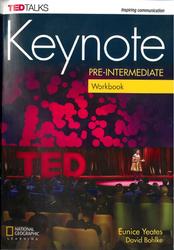 Keynote Pre Intermediate, Workbook, Yeates E., Bohlke D., 2017 — Фрагмент из книги. Without modem technology, Michael Chorost wouldn’t be able to hear a thing. Chorost became deaf in 2001, … Книги по английскому языку
Keynote Pre Intermediate, Workbook, Yeates E., Bohlke D., 2017 — Фрагмент из книги. Without modem technology, Michael Chorost wouldn’t be able to hear a thing. Chorost became deaf in 2001, … Книги по английскому языку Advanced Everyday English, Collins S., 2011 — You will never find a better series of books to help you improve your English vocabulary. Advanced Everyday English is … Книги по английскому языку
Advanced Everyday English, Collins S., 2011 — You will never find a better series of books to help you improve your English vocabulary. Advanced Everyday English is … Книги по английскому языку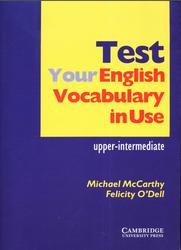 Test Your English Vocabulary In Use, Upper-Intermediate, McCarthy M., O Dell F., 2002 — Did you know that testing your English vocabulary could be enjoyable? You can use this book alone, or in class, … Книги по английскому языку
Test Your English Vocabulary In Use, Upper-Intermediate, McCarthy M., O Dell F., 2002 — Did you know that testing your English vocabulary could be enjoyable? You can use this book alone, or in class, … Книги по английскому языку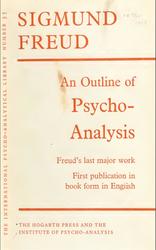 An Outline of Psycho-Analysis, Freud S., 1959 — An Outline of Psycho-Analysis is the last book which Sigmund Freud wrote before his death. A masterpiece of clarity and … Книги по английскому языку
An Outline of Psycho-Analysis, Freud S., 1959 — An Outline of Psycho-Analysis is the last book which Sigmund Freud wrote before his death. A masterpiece of clarity and … Книги по английскому языку
Предыдущие статьи:
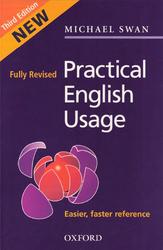 Practical English Usage, Swan M., 2005 — Practical English Usage is a guide to problems of this kind. It deals with over 600 points which regularly cause … Книги по английскому языку
Practical English Usage, Swan M., 2005 — Practical English Usage is a guide to problems of this kind. It deals with over 600 points which regularly cause … Книги по английскому языку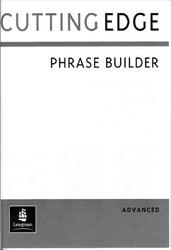 Cutting Edge Phrase Builder, Advanced — Фрагмент из книги. Assert yourself to behave in a determined way so that people do not force you to do … Книги по английскому языку
Cutting Edge Phrase Builder, Advanced — Фрагмент из книги. Assert yourself to behave in a determined way so that people do not force you to do … Книги по английскому языку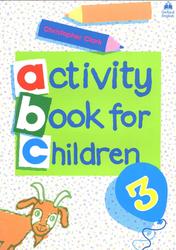 Activity Books for Children 3, Clark C., 1983 — Activity Books for Children are packed with engaging and creative tasks to help your pupils learn English. All the activities … Книги по английскому языку
Activity Books for Children 3, Clark C., 1983 — Activity Books for Children are packed with engaging and creative tasks to help your pupils learn English. All the activities … Книги по английскому языку Cambridge Practice Tests for IELTS 1, Jakeman V., McDowell C., 1996 — This book contains practice material for the International English Language Testing System: four complete practice testa for Academic candidates, plus … Книги по английскому языку
Cambridge Practice Tests for IELTS 1, Jakeman V., McDowell C., 1996 — This book contains practice material for the International English Language Testing System: four complete practice testa for Academic candidates, plus … Книги по английскому языку


